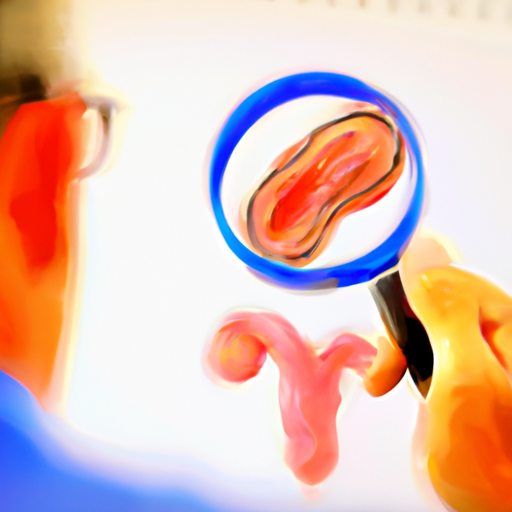Prostate inflammation, also known as prostatitis, is a common condition that affects many men. It can cause discomfort, pain, and urinary problems, impacting their quality of life. Understanding the symptoms, causes, and risk factors of prostate inflammation is crucial for early detection and proper treatment. In this article, we will explore the various aspects of prostate inflammation, including its symptoms, causes, and risk factors. We will also delve into the different diagnostic approaches, from screening to advanced testing, that healthcare professionals use to accurately diagnose the condition. Furthermore, we will discuss the effective treatment options available, including medications, lifestyle changes, and alternative therapies, that can help alleviate the symptoms and improve overall prostate health. By the end of this article, readers will have a comprehensive understanding of prostate inflammation and the steps they can take to manage and treat it effectively.
1. Understanding Prostate Inflammation: Symptoms, Causes, and Risk Factors
Prostate inflammation, also known as prostatitis, is a condition characterized by the inflammation and swelling of the prostate gland. This small, walnut-sized gland is located just below the bladder and plays a crucial role in male reproductive function by producing fluid that nourishes and protects sperm.
Symptoms of prostate inflammation can vary depending on the type of prostatitis. Acute bacterial prostatitis is a severe form of the condition and can cause sudden and intense symptoms such as fever, chills, frequent and painful urination, blood in the urine, and lower abdominal or pelvic pain. Chronic bacterial prostatitis, on the other hand, is a recurring infection of the prostate gland and may present with similar symptoms but less severe in nature.
Non-bacterial prostatitis and chronic pelvic pain syndrome are the most common types of prostatitis, accounting for around 90% of cases. These conditions do not involve an identifiable bacterial infection and can cause symptoms such as pain or discomfort in the pelvic area, frequent urination, difficulty urinating, pain during ejaculation, and erectile dysfunction.
The causes of prostate inflammation can be diverse. In acute bacterial prostatitis, the condition is usually caused by a bacterial infection that enters the prostate gland through the urinary tract. This can occur due to urinary tract infections, sexually transmitted infections, or other sources of bacteria. Chronic bacterial prostatitis can result from recurrent or persistent bacterial infections in the prostate.
Non-bacterial prostatitis and chronic pelvic pain syndrome have a more complex and unclear etiology. It is believed that these conditions may arise from an abnormal immune response, pelvic muscle tension or dysfunction, nerve damage, or inflammation without an identifiable infection. Other risk factors for developing prostate inflammation include a history of urinary tract infections, recent bladder catheterization, enlarged prostate gland (benign prostatic hyperplasia), and
2. Diagnostic Approaches for Prostate Inflammation: From Screening to Advanced Testing
Prostate inflammation, also known as prostatitis, is a common condition that affects men of all ages. It is characterized by the inflammation and swelling of the prostate gland, which is located just below the bladder and surrounds the urethra. Prostate inflammation can cause a range of symptoms, including pain or discomfort in the pelvic area, frequent urination, difficulty urinating, and sexual dysfunction.
Diagnosing prostate inflammation can be challenging, as the symptoms are similar to other prostate conditions such as benign prostatic hyperplasia (BPH) or prostate cancer. Therefore, a comprehensive diagnostic approach is essential to accurately identify the underlying cause of the symptoms and provide appropriate treatment.
The diagnostic process for prostate inflammation typically begins with a thorough medical history and physical examination. During the physical exam, a healthcare provider may perform a digital rectal examination (DRE) to assess the size, shape, and texture of the prostate gland. This can help detect any abnormalities or signs of inflammation.
In addition to the physical exam, various laboratory tests may be conducted to aid in the diagnosis. These tests include a urine analysis to check for signs of infection or blood in the urine, as well as a semen analysis to assess the presence of bacteria or abnormal cells. Prostate-specific antigen (PSA) blood tests may also be performed to measure the levels of PSA, a protein produced by the prostate gland. Elevated levels of PSA can indicate inflammation or other prostate conditions.
Apart from these initial screening tests, more advanced diagnostic techniques may be employed to further evaluate prostate inflammation. Transrectal ultrasound (TRUS) is a commonly used imaging technique in which a small probe is inserted into the rectum to create detailed images of the prostate gland. This can help identify any abnormalities or structural changes.
Another approach is the use of cystoscopy, a procedure that involves inserting a thin
3. Effective Treatment Options for Prostate Inflammation: Medications, Lifestyle Changes, and Alternative Therapies
Prostate inflammation, also known as prostatitis, is a common condition that affects many men worldwide. It refers to the inflammation of the prostate gland, which is a small gland located just below the bladder and in front of the rectum. This inflammation can be caused by various factors, including bacterial infection, non-bacterial inflammation, or other underlying conditions. While the symptoms of prostate inflammation can range from mild discomfort to severe pain, there are several effective treatment options available to alleviate the symptoms and promote healing.
1. Medications:
Medications play a vital role in the treatment of prostate inflammation. Depending on the underlying cause, your healthcare provider may prescribe antibiotics if the inflammation is caused by a bacterial infection. Antibiotics such as fluoroquinolones or trimethoprim-sulfamethoxazole are commonly prescribed for bacterial prostatitis. It's crucial to complete the full course of antibiotics as prescribed by your doctor, even if the symptoms improve, to ensure complete eradication of the infection.
In cases of non-bacterial prostatitis or chronic pelvic pain syndrome, anti-inflammatory drugs like nonsteroidal anti-inflammatory drugs (NSAIDs) may be recommended. These drugs help reduce inflammation and alleviate pain. Alpha-blockers, such as tamsulosin, can also be prescribed to relax the muscles around the prostate and improve urine flow, reducing symptoms like difficulty urinating.
2. Lifestyle Changes:
In addition to medications, certain lifestyle modifications can significantly contribute to the management of prostate inflammation. Drinking plenty of fluids, particularly water, helps flush out bacteria and reduces the concentration of irritants in the urine. Avoiding alcohol, caffeine, and spicy foods may also help alleviate symptoms, as these substances can irritate the prostate. It is advisable to limit or avoid activities that can worsen symptoms, such as prolonged sitting, cycling, or

